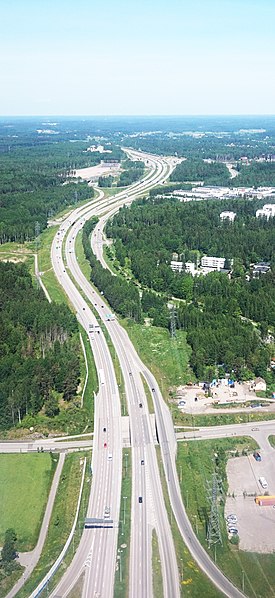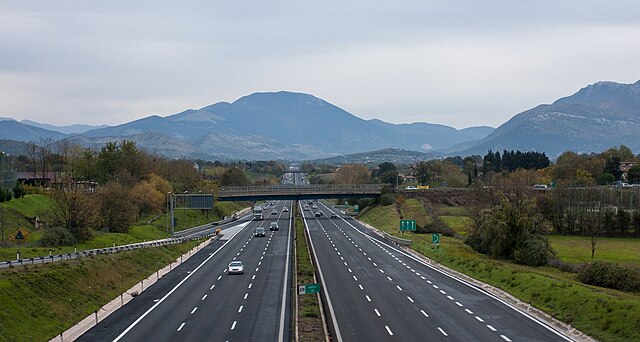A dual carriageway (BrE) or a divided highway (AmE) is a class of highway with carriageways for traffic travelling in opposite directions separated by a central reservation (BrE) or median (AmE). Roads with two or more carriageways which are designed to higher standards with controlled access are generally classed as motorways, freeways, etc., rather than dual carriageways.
A typical British dual carriageway with central barrier on the A63 near Hull, England
Freeway of Route 25 between Tuluá and Andalucía, Valle del Cauca, Colombia. In 2014 there were 2,279 kilometers of dual carriageway highways in Colombia.
Clara Barton Parkway outside Washington, D.C.
Jersey barriers may be used to separate the carriageways where the space is narrow. See this example near Málaga, Spain. There is also a bus stop in the bottom-right corner of the picture; it would not exist in a motorway.
Controlled-access highway
A controlled-access highway is a type of highway that has been designed for high-speed vehicular traffic, with all traffic flow—ingress and egress—regulated. Common English terms are freeway, motorway, and expressway. Other similar terms include throughway or thruway and parkway. Some of these may be limited-access highways, although this term can also refer to a class of highways with somewhat less isolation from other traffic.
The cloverleaf interchange between US 131, M-6 and 68th Street in Cutlerville, Michigan, United States, shows many of the features of controlled-access highways: entry and exit ramps, median strips for opposing traffic, no at-grade intersections and no direct access to properties.
Typical overhead signage on Ontario's King's Highway network featuring an airport pictogram, distances to upcoming interchanges, and lane guidance
An aerial view of Finnish national road 3 (E12), a motorway between Tampere and Helsinki in Finland
Autostrada A1 (E35/E45) runs through Italy linking some of the largest cities of the country: Milan, Bologna, Florence, Rome and Naples








